In today’s fast-paced digital landscape, mastering eCommerce tracking is essential for success. Tag management isn’t just an option; it’s a game-changer. Embrace streamlined data collection and insights to elevate your strategy and drive growth like never before!
How to Master eCommerce Tracking: Why Tag Management Is No Longer Optional
In today’s digital landscape, where every click, scroll, and interaction holds the potential to drive revenue and shape customer experiences, mastering eCommerce tracking has never been more critical. As businesses strive to navigate the complexities of online commerce, the ability to accurately measure and analyze user behavior can mean the difference between merely surviving and truly thriving. Enter tag management—a powerful tool that not only simplifies tracking but also unleashes a wealth of insights to propel your business forward.
Gone are the days when tracking was an afterthought; it is now an essential strategy woven into the fabric of successful eCommerce. As consumer expectations evolve and competition intensifies, understanding how to harness the full potential of your data is no longer optional—it is imperative. In this article, we will explore the transformative power of effective tag management and provide you with the knowledge and strategies needed to elevate your eCommerce tracking to new heights. Join us on this journey to unlock the secrets of eCommerce success, where your data becomes your greatest asset and informed decision-making leads the way to a brighter, more prosperous future.
Understanding the Importance of eCommerce Tracking in a Competitive Landscape
In today’s fast-paced digital environment, mastering eCommerce tracking is essential for any business aspiring to thrive. With the influx of competitors and ever-changing consumer behavior, a robust tracking strategy allows businesses to gain vital insights into customer interactions. Understanding these interactions not only helps improve user experience but also enables companies to make data-driven decisions that directly influence their bottom line.
The benefits of effective eCommerce tracking are manifold:
- Enhanced Customer Insights: Tracking user behavior across multiple touchpoints helps identify purchasing patterns, preferences, and pain points.
- Improved Marketing ROI: By analyzing which campaigns drive the most conversions, businesses can allocate resources more effectively, maximizing their marketing spend.
- Personalized Customer Experiences: Understanding customer journeys allows for tailored marketing messages and improved product recommendations.
- Data Compliance and Security: Proper tracking ensures adherence to privacy regulations, building trust and transparency with your customers.
In a competitive landscape, businesses that leverage advanced tracking tools gain a significant advantage. ECommerce platforms that implement tag management systems can easily deploy tracking scripts without the need for extensive coding knowledge. This agility allows teams to react swiftly to market trends and customer feedback, facilitating continuous optimization of their marketing strategies.
Moreover, with the integration of AI and machine learning, eCommerce tracking evolves beyond simple metrics. Businesses can now predict future trends and consumer behaviors by analyzing historical data. This predictive capability transforms how companies strategize, enabling proactive rather than reactive marketing efforts.
Key Metrics to Track:
| Metric | Importance |
|---|---|
| Conversion Rate | Measures the percentage of visitors who make a purchase. |
| Average Order Value | Indicates the average amount spent per transaction. |
| Customer Lifetime Value | Estimates the total revenue a customer will generate over their lifetime. |
| Cart Abandonment Rate | Tracks the percentage of shoppers who abandon their carts before completing a purchase. |
As eCommerce continues to evolve, businesses that prioritize tracking will not only keep pace with competitors but also pave the way for innovative growth strategies. The ability to adapt and refine approaches in real-time can mean the difference between stagnation and success in a crowded marketplace.
The Evolution of Tag Management and Its Role in Data Accuracy
The landscape of digital marketing has undergone a tremendous transformation, particularly in the realm of tag management. As eCommerce platforms expand and consumer behavior evolves, the tools we use to track and analyze data have had to adapt accordingly. The traditional methods of manual tag implementation and maintenance have become obsolete, giving rise to sophisticated tag management systems (TMS) that streamline the process and enhance data accuracy.
The Rise of Tag Management Systems has revolutionized how businesses manage their analytics. Initially, marketers relied on developers to install tracking codes, leading to delays and potential errors. Now, with a TMS, marketing teams can deploy and manage tags without the need for constant IT involvement. This agility not only accelerates the implementation of tracking but also empowers marketers to make data-driven decisions in real-time.
With the shift towards a more automated approach, data accuracy has become paramount. Inaccurate data can lead to misguided strategies, wasted budgets, and missed opportunities. Advanced tag management solutions provide features that ensure data integrity, such as:
- Version control and auditing, allowing teams to track changes and revert to previous configurations if needed.
- Error detection capabilities that identify issues before they impact data collection.
- Debugging tools that facilitate testing and verification of tags in a live environment.
As we look to the future, the integration of machine learning within tag management systems is poised to elevate data accuracy to new heights. By analyzing user behavior patterns, these intelligent systems can automatically adjust tracking parameters, ensuring that businesses capture the most relevant data without overwhelming their analytics platforms with noise.
Moreover, the convergence of data privacy regulations and consumer expectations means that transparency in data collection is more crucial than ever. A robust TMS not only simplifies compliance with regulations like GDPR but also fosters a sense of trust with customers. By clearly communicating how data is collected and utilized, businesses can enhance their brand reputation while ensuring that their tracking methods are ethical.
Ultimately, mastering eCommerce tracking hinges on leveraging the full potential of tag management. This evolution from manual processes to automated solutions represents a significant shift towards data-driven decision-making. By embracing these advancements, businesses can harness the power of accurate data to tailor their marketing strategies, optimize user experiences, and ultimately drive growth in an increasingly competitive digital marketplace.
Unlocking the Power of Data: How Effective Tracking Drives Business Growth
In the fast-paced world of eCommerce, data is not just a byproduct; it is the lifeblood that fuels growth and innovation. Businesses that harness the power of data through effective tracking can unveil insights that drive smarter decisions. Understanding customer behavior, refining marketing strategies, and optimizing product offerings become attainable goals when you have the right tracking mechanisms in place.
Tag management systems (TMS) have evolved from being a nice-to-have tool to an essential component of any successful eCommerce strategy. These platforms allow businesses to easily embed tracking codes on their websites without extensive IT involvement. By streamlining the process of adding and managing tags, businesses can focus on what truly matters—driving growth.
Benefits of Effective Tracking:
- Enhanced Customer Insights: Accurate tracking reveals which products capture interest and how customers navigate your site.
- Informed Marketing Spend: With precise data on campaign performance, businesses can allocate budgets more effectively, maximizing ROI.
- Real-time Adjustments: Immediate feedback allows for on-the-fly adjustments to strategies, ensuring that opportunities are not missed.
To illustrate the profound impact of effective tracking, consider the following table that highlights key metrics influenced by TMS:
| Metric | Before TMS | After TMS |
|---|---|---|
| Conversion Rate | 1.5% | 3.8% |
| Average Order Value | $50 | $70 |
| Customer Retention Rate | 20% | 35% |
As shown above, implementing a robust tag management system can significantly enhance critical metrics. This translates to tangible benefits, such as increased revenue and a loyal customer base. The importance of mastering eCommerce tracking cannot be overstated; it empowers businesses to make data-driven decisions that resonate with their audience.
the future belongs to those who embrace data as a strategic asset. Businesses that invest in effective tracking and tag management are not just keeping pace; they are setting the pace. It’s time to unlock the full potential of your data and drive your business toward unprecedented growth.

Common Tracking Pitfalls and How to Avoid Them
Tracking the performance of your eCommerce site is crucial for making informed decisions. However, many businesses fall prey to common pitfalls that can distort data and hinder growth. Understanding these pitfalls and how to sidestep them can empower your tracking strategy and enhance your overall performance.
- Inconsistent Tag Implementation: One of the most frequent errors is inconsistent tag deployment across various pages. When tags are missing or incorrectly placed, it leads to fragmented data. Ensure that every page has standardized tags to maintain data integrity.
- Ignoring Events and Goals: Many eCommerce sites focus solely on page views and purchases, neglecting other vital interactions. By failing to track events like clicks, form submissions, or product views, you miss out on valuable insights. Implement event tracking to capture a full spectrum of user behaviors.
- Overlooking Data Layer Management: The data layer acts as a bridge between your website and tracking tools. Without proper management, the data layer can become cluttered or misconfigured, leading to inaccurate reporting. Regularly audit and refine your data layer to ensure it aligns with your tracking requirements.
- Neglecting Privacy Regulations: With increasing scrutiny on user privacy, it’s crucial to ensure compliance with regulations like GDPR and CCPA. Failing to implement proper consent mechanisms can result in missing data or legal repercussions. Familiarize yourself with these regulations and build a transparent tracking framework.
When it comes to tracking, having clear documentation and a strategy in place can save you from future headaches. Here’s a simple table outlining best practices for effective tracking:
| Best Practice | Description |
|---|---|
| Consistent Tagging | Ensure tags are uniformly deployed on all pages. |
| Comprehensive Event Tracking | Track important user interactions beyond just sales. |
| Regular Data Layer Audits | Keep your data layer organized and relevant. |
| Privacy Compliance | Implement user consent for data collection. |
By focusing on these areas, you can significantly enhance the accuracy and reliability of your tracking efforts. Remember, the goal is not just to collect data, but to transform it into actionable insights that drive your business forward.
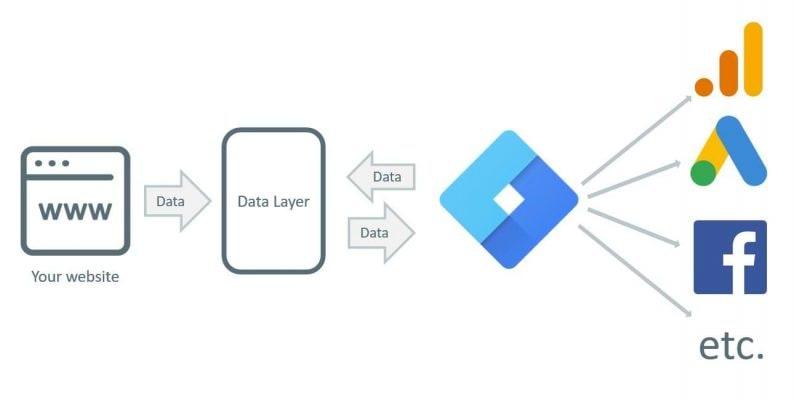
Choosing the Right Tag Management System for Your Business Needs
In today’s fast-paced digital landscape, selecting the right Tag Management System (TMS) is pivotal for optimizing your eCommerce tracking. A robust TMS not only streamlines the management of tracking codes but also enhances data accuracy, which is crucial for making informed business decisions. Here are some essential factors to consider when choosing a TMS that aligns with your business objectives:
- User-Friendliness: Prioritize a platform that is intuitive and easy to navigate. A user-friendly interface allows your team to implement and manage tags without extensive technical expertise, reducing the time to market for your marketing campaigns.
- Integration Capabilities: Ensure the TMS integrates seamlessly with your existing tools and platforms, such as analytics, CRM systems, and eCommerce platforms. A versatile TMS will support your tech stack and enable efficient data flow between systems.
- Version Control: Look for a TMS that offers robust version control features. This will allow you to track changes, roll back to previous versions if needed, and maintain a history of modifications for compliance and auditing purposes.
- Real-Time Data Tracking: The ability to collect and analyze data in real-time is essential for making timely decisions. Choose a TMS that supports real-time tracking so you can swiftly adapt your strategies based on user behavior and campaign performance.
Another critical aspect is the cost-effectiveness of the TMS. While it may be tempting to opt for a free solution, consider the long-term value and support offered by premium systems. Investing in a quality TMS can significantly improve your tracking capabilities and ultimately lead to higher revenue.
| Feature | Free TMS | Premium TMS |
|---|---|---|
| Support | Community Forums | Dedicated Account Manager |
| Customization | Limited | High |
| Data Security | Basic | Advanced |
| Integration | Minimal | Comprehensive |
Ultimately, selecting the right TMS is about understanding your unique business needs and future scalability. Engage stakeholders from marketing, IT, and analytics to get a comprehensive view of the requirements. A collaborative approach will ensure that the chosen system can grow with your business and adapt to evolving digital marketing landscapes.
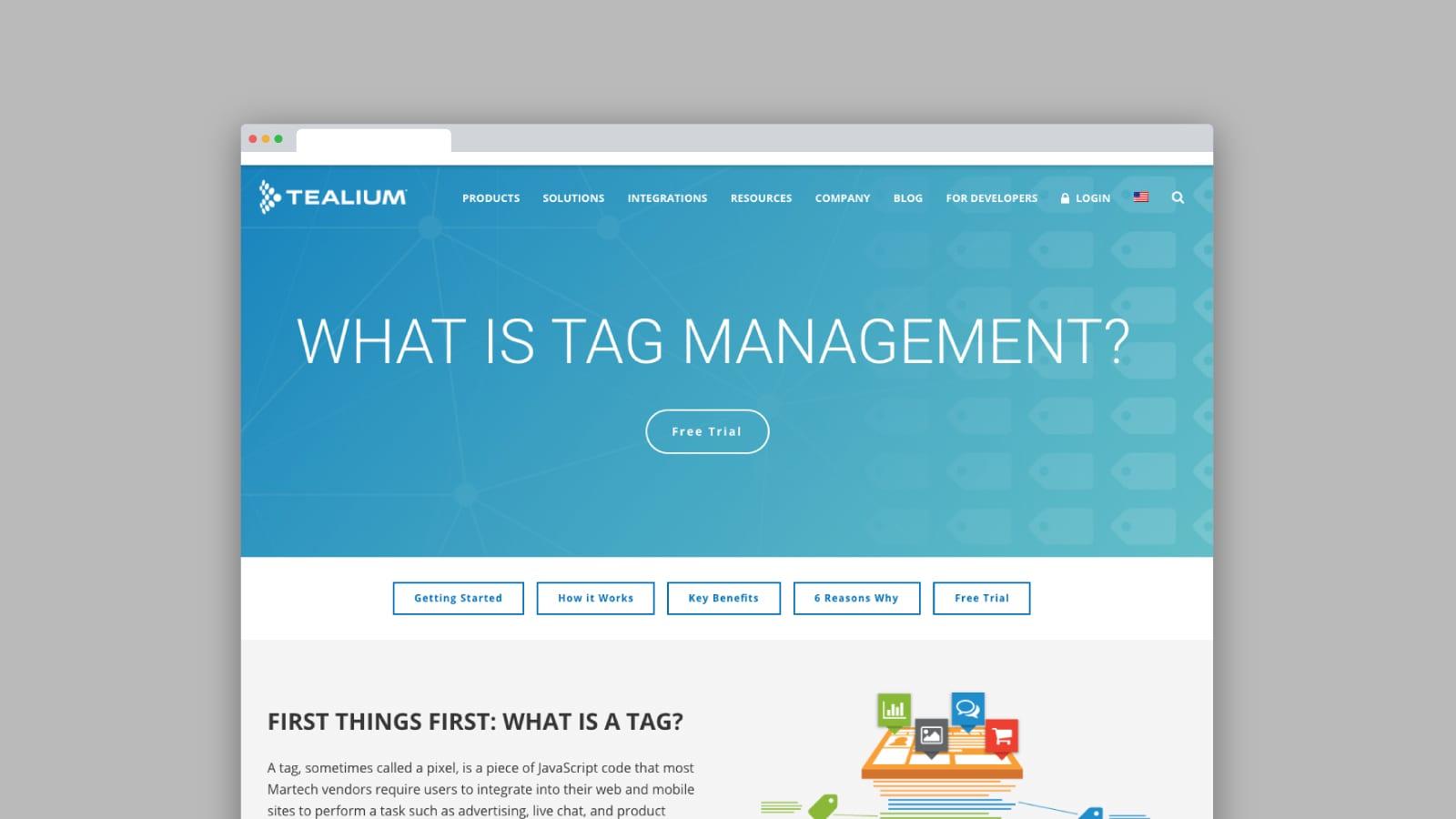
Integrating Tag Management into Your Existing Tech Stack Seamlessly
Integrating tag management into your existing tech stack can feel daunting, but with the right approach, it can become a seamless process. By leveraging a robust tag management system (TMS), you can streamline your tracking efforts without overhauling your entire infrastructure. Here are some strategies to ensure smooth integration:
- Assess Your Current Tools: Before diving into integration, take stock of your existing platforms. Identify which tools are essential for your operations and which can be replaced or enhanced with tag management.
- Choose the Right TMS: Select a tag management solution that aligns with your business goals. Look for one that offers flexibility, scalability, and capabilities tailored to eCommerce needs.
- Plan Your Tag Structure: Outline a clear tagging strategy that defines what events and interactions you want to track. This roadmap will help in mapping tags to your specific eCommerce objectives.
- Involve Your Team: Communication is key. Ensure that your marketing, development, and data analytics teams are on the same page. Collaboration will facilitate smoother implementation and adoption.
A well-defined implementation plan can make all the difference. Start by creating a timeline that includes milestones for testing and feedback. By breaking down the process into manageable phases, you can address any challenges as they arise.
It’s also crucial to conduct thorough testing before fully deploying your tags. Allocate resources to ensure that every tag functions as intended, without disrupting user experience. A successful launch relies on meticulous attention to detail and proactive monitoring.
| Integration Steps | Purpose |
|---|---|
| Evaluate Existing Tools | Identify opportunities for improvement |
| Select TMS | Ensure alignment with business needs |
| Define Tag Structure | Map tracking to business objectives |
| Team Collaboration | Facilitate smooth implementation |
| Testing Phase | Ensure functionality and user experience |
Once integrated, the benefits of tag management become apparent. Enhanced tracking capabilities lead to improved data accuracy, better campaign optimization, and ultimately, higher conversion rates. By making tag management a core component of your tech stack, you empower your organization to make data-driven decisions that propel growth.
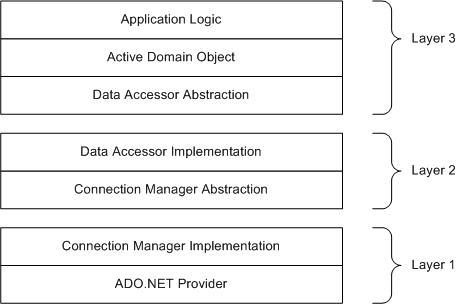
Mastering the Art of Data Layer Implementation for Enhanced Insights
Implementing a robust data layer is crucial for any eCommerce business aiming to gain actionable insights from user interactions. A well-structured data layer serves as the backbone for your tracking setup, allowing for seamless integration between your website and analytics tools. By establishing a clear framework, you not only enhance data accuracy but also empower your marketing team to make data-driven decisions.
Here are some key components to consider when mastering data layer implementation:
- Define Your Objectives: Begin by identifying what you want to track. This could range from product views to checkout completions. Having clear objectives allows for a more focused data layer design.
- Standardize Your Data: Utilize standardized naming conventions for variables. This ensures consistency across different teams and tools, reducing the risk of misinterpretation.
- Utilize Event Tracking: Implement event listeners that capture user actions in real time. This level of granularity enables you to analyze behavior patterns effectively.
- Integrate with Tag Management Systems: Leverage tools like Google Tag Manager to streamline tracking. This allows for easy updates and management of your tags without altering your website’s code.
Moreover, it’s essential to test your implementation. A/B testing can reveal how different tracking setups impact your insights. Utilizing tools like Google Tag Assistant or Data Layer Inspector can help validate your data layer, ensuring that your setup captures all necessary interactions.
The benefits of a well-executed data layer are profound. By gaining deeper insights into user behavior, businesses can:
- Improve Customer Experience: Understanding how users interact with your site allows for tailored experiences, ultimately increasing conversion rates.
- Enhance Marketing Strategy: With accurate data, marketing campaigns can be optimized based on real user behavior rather than assumptions.
- Drive ROI: Better tracking leads to greater visibility into which channels are performing well, allowing for more effective allocation of resources.
As you embark on the journey of data layer implementation, remember that it is not just about collecting data; it’s about transforming that data into valuable insights. By fostering a culture that values data-driven decisions, your eCommerce business can thrive in an increasingly competitive landscape.
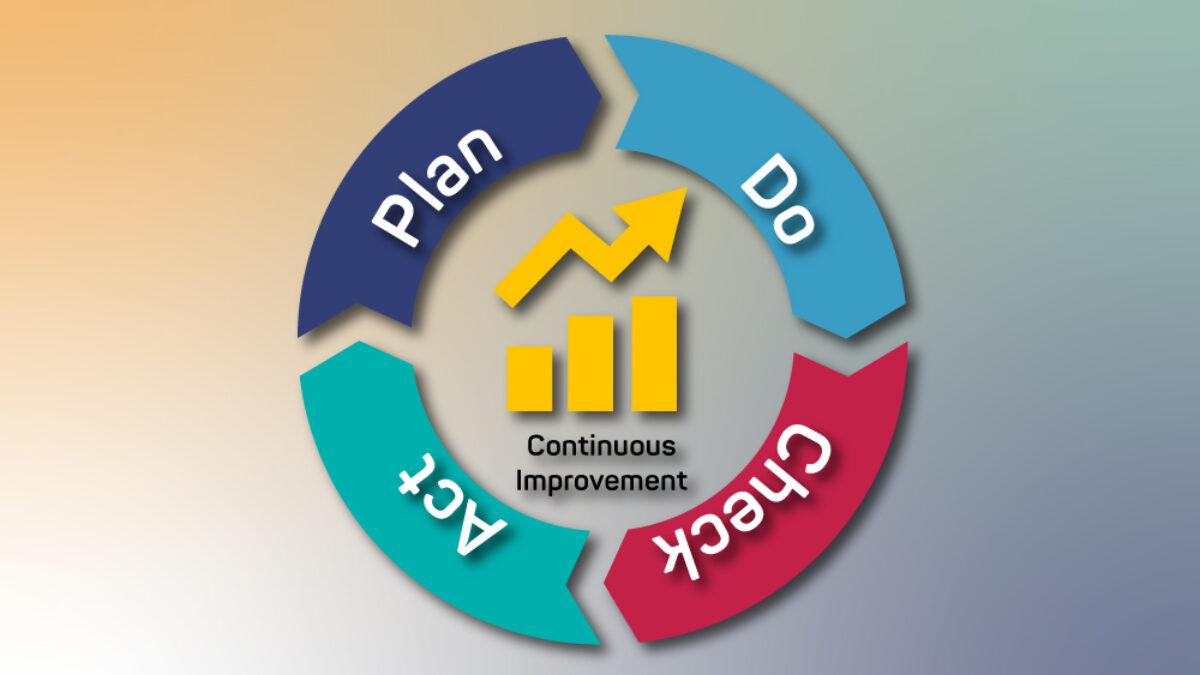
Creating a Culture of Continuous Improvement Through Data-Driven Decisions
In today’s fast-paced eCommerce landscape, the ability to adapt and improve constantly is paramount to staying ahead of the competition. Organizations that embrace a culture of continuous improvement are not just surviving; they are thriving. Data-driven decisions empower teams to identify critical areas for enhancement, allowing businesses to evolve in response to customer needs and market trends.
To foster this culture, businesses must prioritize a robust tag management strategy. This foundational step ensures that every interaction on your website is tracked and analyzed. By implementing a streamlined tag management system, you can:
- Improve data accuracy: Ensure that your data collection mechanisms are reliable, giving you a clearer picture of user behavior.
- Enhance agility: Quickly deploy and modify tags without the need for extensive development resources, allowing for rapid experimentation.
- Facilitate collaboration: Unify marketing, analytics, and development teams around a common framework, promoting a shared vision for the business.
As businesses gather data, the challenge becomes translating this information into actionable insights. Utilizing advanced analytics tools can help distill complex datasets into key performance indicators (KPIs) that drive strategic decisions. Consider categorizing your KPIs into a structured format:
| Metric | Description | Goal |
|---|---|---|
| Conversion Rate | The percentage of visitors completing a desired action. | Increase by 15% over the next quarter |
| Customer Retention Rate | The percentage of customers who return after their first purchase. | Improve to 70% within six months |
| Average Order Value | The average amount spent per transaction. | Raise by $20 within the next fiscal year |
Regularly reviewing these metrics fosters an environment where data drives decision-making. Teams can engage in constructive discussions, identifying strengths and weaknesses while adapting strategies to meet evolving objectives. This iterative process not only promotes accountability but also cultivates a sense of ownership among team members.
Moreover, integrating customer feedback into your data strategy is crucial. By actively listening to your customers and understanding their pain points, you can identify opportunities for improvement that quantitative data alone might miss. Building surveys, feedback forms, and conducting user interviews can enhance your analytics efforts, creating a holistic view of customer experience.
Ultimately, embracing a culture of continuous improvement through data-driven decisions translates into better customer experiences and sustainable growth. By mastering eCommerce tracking and implementing an effective tag management system, your organization can unlock the full potential of its data, leading to informed strategies that propel your business forward.
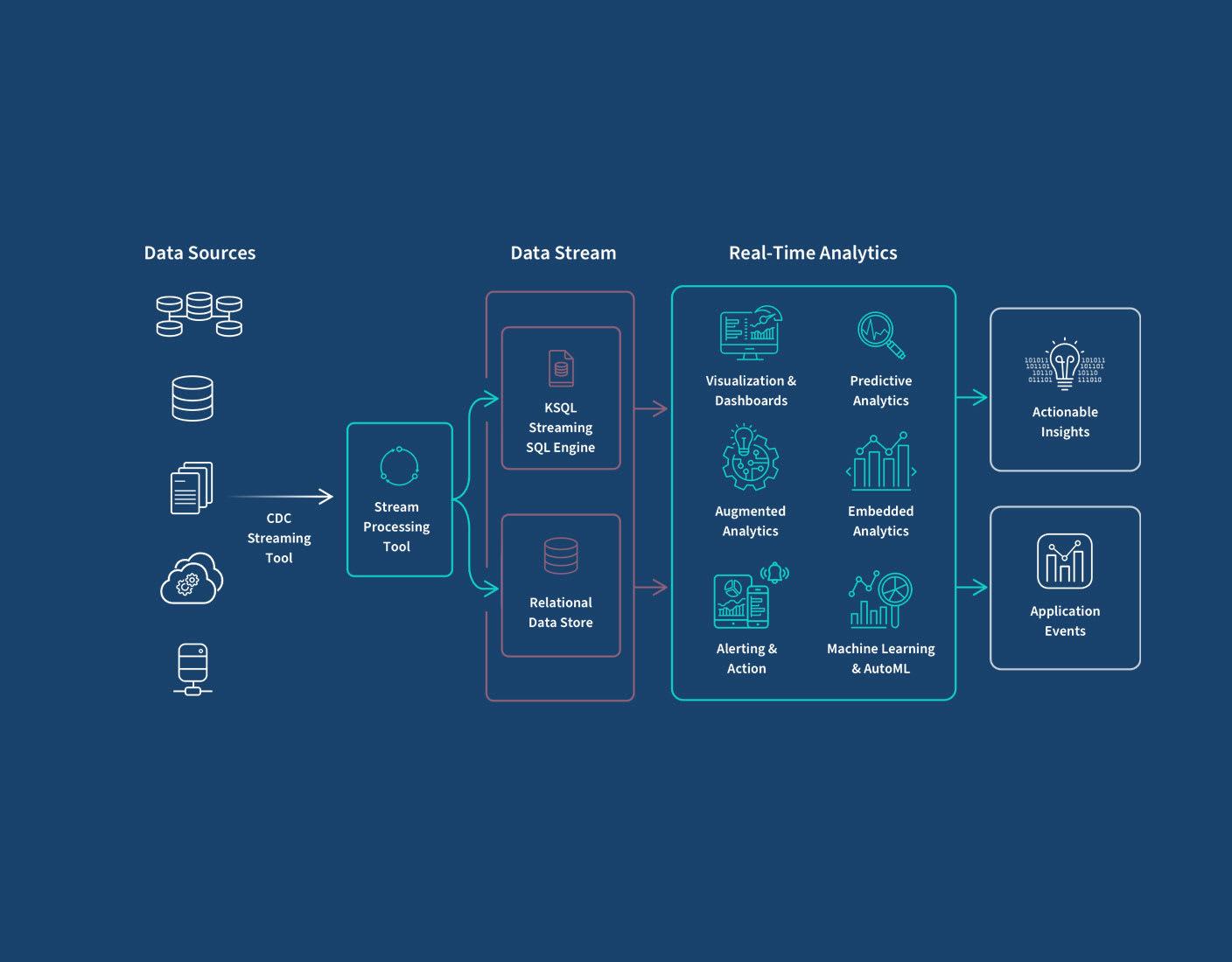
Leveraging Real-Time Analytics to Optimize Customer Experience
In today’s fast-paced digital landscape, the ability to make data-driven decisions in real-time is a game changer for eCommerce businesses. Real-time analytics empowers organizations to swiftly adapt their strategies based on customer behavior and market trends, providing a significant edge over competitors. Utilizing these insights effectively can enhance the customer experience, turning casual browsers into loyal buyers.
By capturing and analyzing data as it happens, businesses can identify key patterns and preferences. This allows for:
- Personalized Marketing: Tailor recommendations and promotions based on real-time browsing habits.
- Immediate Issue Resolution: Quickly address any barriers that may hinder the customer journey, such as broken links or slow loading times.
- Dynamic Pricing Strategies: Adjust prices based on customer demand and competitor actions, maximizing revenue opportunities.
Integrating advanced tag management systems is crucial for effective real-time analytics. These systems streamline the process of collecting data across various touchpoints, enabling businesses to:
- Centralize Data Management: Easily manage and deploy tracking codes without extensive IT involvement.
- Enhance Data Accuracy: Reduce human error by automating data collection processes.
- Improve Site Performance: Minimize the impact of heavy scripts on page load times, ensuring a smooth user experience.
Furthermore, leveraging real-time analytics not only helps in understanding customer behavior but also in predicting future trends. For instance, by analyzing heatmaps and session recordings, eCommerce brands can optimize their website layout and functionality to better meet customer expectations. The ability to iterate quickly based on data-driven insights fosters a responsive brand image that resonates with consumers.
| Real-Time Analytics Benefits | Impact on Customer Experience |
|---|---|
| Enhanced personalization | Increased customer engagement and loyalty |
| Immediate feedback loops | Faster adjustments to products/services |
| Proactive customer service | Reduced churn rates |
The synergy between effective tag management and real-time analytics ultimately leads to a more agile and customer-centric approach in eCommerce. Brands that harness these tools are not just reacting to consumer needs; they are anticipating them, creating an enriched shopping experience that sets them apart in a crowded marketplace.
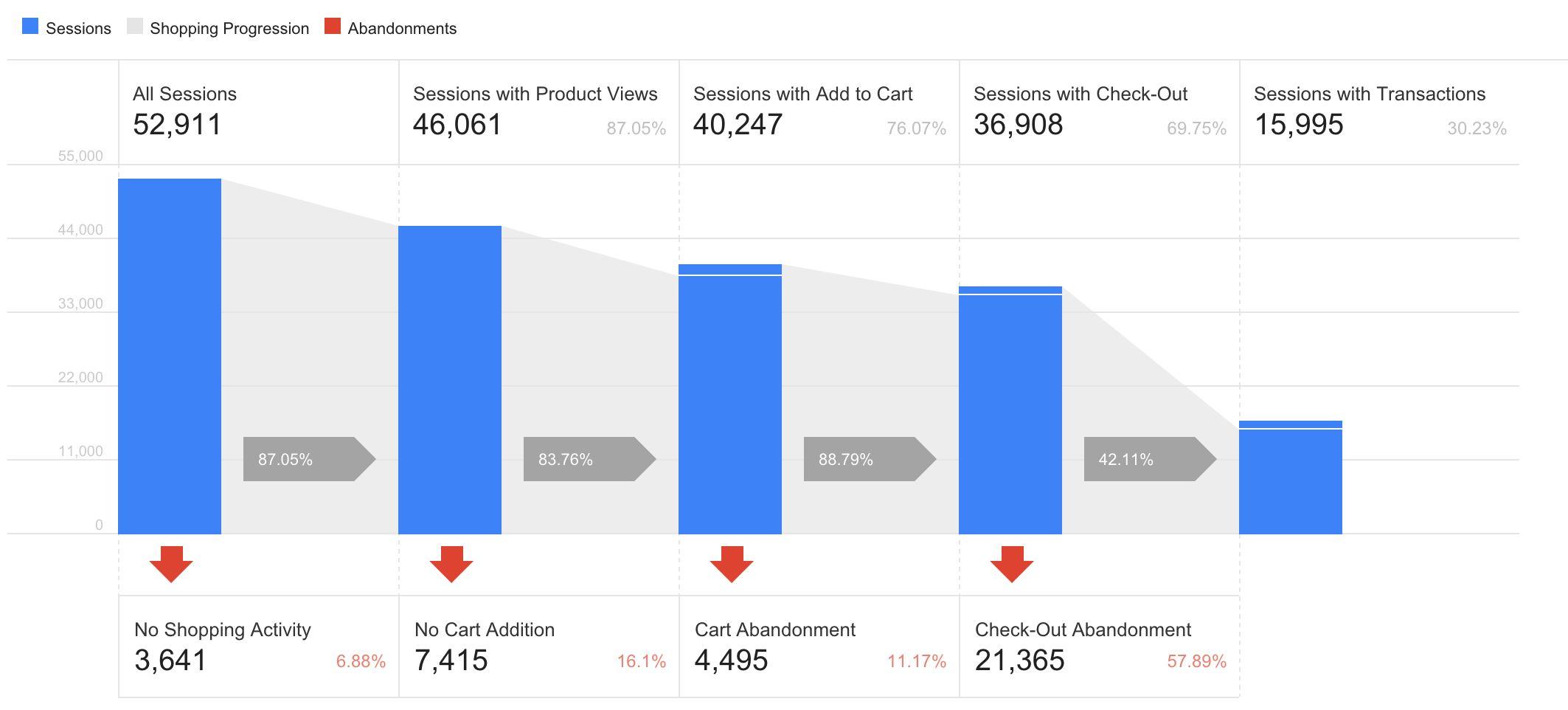
Future-Proofing Your eCommerce Strategy with Advanced Tracking Techniques
In an ever-evolving digital landscape, staying ahead in eCommerce requires more than just a basic understanding of tracking. Advanced tracking techniques empower businesses to gather critical insights, refine their strategies, and enhance the customer journey. Embracing these techniques is crucial for future-proofing your eCommerce strategy, ensuring that you not only keep pace with industry changes but also set the trends.
Investing in a robust tag management system (TMS) is no longer a luxury but a necessity. A TMS acts as a centralized hub, simplifying the process of adding, editing, and managing tags without needing extensive coding knowledge. This flexibility allows marketers to quickly implement changes in response to market dynamics, thus maintaining a competitive edge. Consider the benefits:
- Faster Deployment: Immediate updates to tracking codes without developer intervention.
- Enhanced Data Accuracy: Reduce errors by minimizing manual code entries.
- Improved Site Performance: Load times can be optimized as unnecessary tags are easily managed.
Moreover, advanced tracking techniques enable you to capture a wealth of data that informs every aspect of your business. From understanding customer behavior to optimizing marketing campaigns, the insights gained through sophisticated tracking systems are invaluable. Here are some key tracking strategies to implement:
- Event Tracking: Monitor specific actions taken by users on your website, such as clicks, downloads, and video plays.
- Cross-Device Tracking: Gain a comprehensive view of customer journeys across multiple devices, enhancing personalization.
- Enhanced Ecommerce Tracking: Analyze product impressions, clicks, and purchases to refine merchandising strategies.
To visualize the profound effect these tracking techniques can have on your eCommerce performance, consider the following table:
| Tracking Technique | Impact on Business | Implementation Ease |
|---|---|---|
| Event Tracking | Increased conversion rates | Moderate |
| Cross-Device Tracking | Improved customer insights | Advanced |
| Enhanced Ecommerce Tracking | Optimized product strategies | Easy |
By mastering these advanced tracking techniques, you position your eCommerce business not just to respond to current trends but to anticipate future ones. As analytics become more sophisticated, leveraging cutting-edge tracking will empower you to make data-driven decisions that enhance customer experiences, drive sales, and build brand loyalty. Remember, in the world of eCommerce, those who adapt quickly will always thrive.
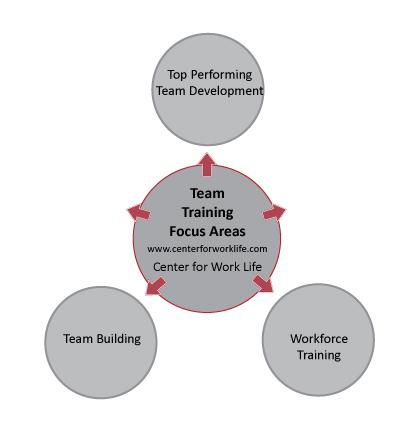
Building a Comprehensive Training Program for Your Team
is essential in mastering eCommerce tracking. This initiative can empower your team with the necessary skills and knowledge to leverage tag management effectively. Here’s how to construct a training program that enhances proficiency and drives results.
Start by identifying key areas of focus. Consider integrating the following topics into your training curriculum:
- Fundamentals of eCommerce Tracking: Teach your team the basics of tracking customer behavior, conversions, and events.
- Tag Management Systems (TMS): Introduce various TMS options like Google Tag Manager and Adobe Launch, highlighting their functionalities and benefits.
- Data Layer Implementation: Discuss the significance of a well-structured data layer for consistent and reliable data collection.
- Best Practices in Tag Deployment: Share effective strategies for deploying tags without compromising website performance.
- Privacy and Compliance: Address compliance issues surrounding data tracking, including GDPR and CCPA regulations.
Next, consider the format of your training sessions. A mix of theoretical knowledge and practical application can enhance retention and engagement. You can utilize:
- Interactive Workshops: Allow team members to practice implementing tags in real-time scenarios.
- Case Studies: Present successful examples of eCommerce tracking from renowned companies and analyze their strategies.
- Online Resources: Offer access to webinars, articles, and tutorials that team members can explore at their own pace.
To evaluate the effectiveness of your training program, establish clear metrics. Track progress through:
- Pre- and Post-Training Assessments: Measure knowledge gained through quizzes before and after sessions.
- Performance Metrics: Monitor changes in tracking accuracy and reporting efficiency post-training.
- Feedback Surveys: Gather insights from team members on the training effectiveness and areas for improvement.
make ongoing learning a priority. The world of eCommerce tracking is ever-evolving, and your team should stay ahead of the curve. Encourage a culture of continuous education by:
- Organizing Regular Knowledge-Sharing Sessions: Allow team members to present on new tools or updates they’ve learned about.
- Subscribing to Industry Newsletters: Keep everyone informed about the latest trends and innovations in eCommerce tracking.
- Offering Advanced Courses: Provide opportunities for further specialization in areas like analytics or digital marketing.
By investing in a comprehensive training program, you not only enhance your team’s capabilities but also lay a strong foundation for your eCommerce success. Embrace this challenge, and watch your team flourish in their newfound expertise!
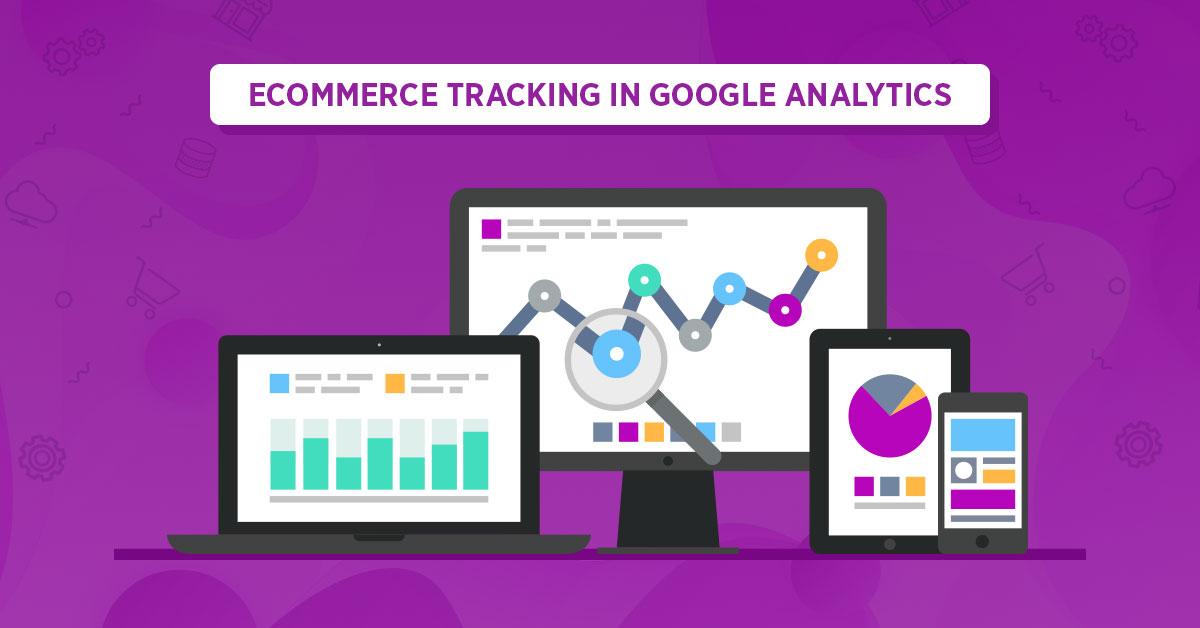
Case Studies: Success Stories of Brands That Mastered eCommerce Tracking
Success Stories of Brands That Mastered eCommerce Tracking
In the competitive world of eCommerce, some brands have risen above the noise by effectively leveraging eCommerce tracking. These success stories exemplify how strategic use of data can drive growth, enhance customer experience, and ultimately lead to increased sales. Here are a few notable examples:
1. XYZ Fashion
XYZ Fashion, a mid-sized online retailer, faced challenges in understanding customer behavior on their website. By implementing a robust tag management system, they could track user interactions seamlessly. The results were remarkable:
- 30% increase in conversion rates within three months.
- 20% reduction in cart abandonment.
- Enhanced customer insights leading to targeted marketing strategies.
2. Tech Gadgets Co.
This electronics retailer realized they were missing key analytics due to outdated tracking methods. By switching to a modern tag management solution, they unlocked valuable data, which allowed them to:
- Identify top-performing products.
- Optimize their ad spend by 40%.
- Segment audiences for personalized marketing efforts.
The result? A 50% boost in ROI within six months.
3. Gourmet Foods
Gourmet Foods, an online grocer, struggled with customer retention. After adopting comprehensive eCommerce tracking through tag management, they were able to dive deep into customer purchase patterns and preferences.
| Strategy | Result |
|---|---|
| Personalized Email Campaigns | 25% increase in repeat purchases |
| Dynamic Web Content | 15% higher engagement rates |
These data-driven strategies undoubtedly transformed their business, showcasing the power of effective tracking.
4. Home Decor Experts
Lastly, Home Decor Experts saw an opportunity to enhance user experience on their site. By utilizing eCommerce tracking, they addressed pain points in the customer journey, leading to:
- Improved site navigation based on user behavior data.
- 15% increase in average order value.
- Boosted customer satisfaction scores by implementing feedback loops.
Their commitment to understanding their audience not only optimized their eCommerce platform but also solidified customer loyalty.

The Road Ahead: Embracing Automation and AI in Tag Management
The future of eCommerce tracking is undeniably tied to the seamless integration of automation and artificial intelligence in tag management systems. As businesses increasingly recognize the importance of data-driven decision-making, the ability to collect, analyze, and act on data in real-time becomes paramount. By embracing automation and AI, organizations can transform their tag management processes into a powerhouse of insights and efficiency.
Here are several ways automation and AI can revolutionize your approach to tag management:
- Enhanced Data Accuracy: Automated systems reduce human error, ensuring that the data collected is reliable and actionable.
- Real-Time Insights: AI algorithms can analyze data as it flows in, providing immediate feedback and insights that can drive marketing strategies and business decisions.
- Dynamic Tag Management: Automating the deployment of tags allows for quick adjustments based on user behavior or external factors, optimizing performance on-the-fly.
- Cost Efficiency: By minimizing manual processes, companies can allocate resources more effectively, reducing operational costs associated with tag management.
Moreover, AI-driven insights can help eCommerce businesses understand customer journeys at a granular level. This deep understanding enables tailored marketing strategies, enhancing user engagement and increasing conversion rates. Imagine knowing, with pinpoint accuracy, which touchpoints lead to sales and which ones cause drop-offs, all thanks to the power of intelligent tag management.
To illustrate the potential impact of these technologies, consider the following table showcasing key metrics before and after implementing an AI-enhanced tag management system:
| Metric | Before AI Implementation | After AI Implementation |
|---|---|---|
| Data Collection Time | 24 hours | Real-time |
| Error Rate | 12% | 2% |
| Conversion Rate | 2.5% | 4.8% |
As businesses look ahead, the integration of automation and AI in tag management will no longer be just an advantage; it will become a necessity. The ability to adapt to changing market dynamics and consumer behavior will define the leaders in eCommerce. Those who invest in these technologies today will find themselves ahead of the curve, equipped with the tools necessary to thrive in an increasingly competitive landscape.
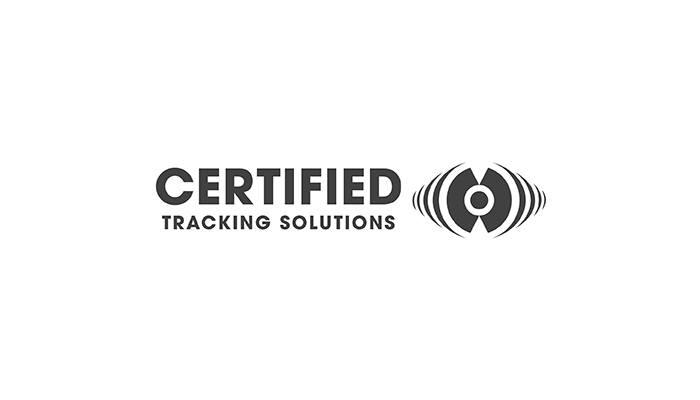
Taking Action: Your Step-by-Step Guide to Implementing Robust Tracking Solutions
In today’s fast-paced digital landscape, the ability to track user behavior comprehensively is vital for eCommerce success. Implementing a robust tracking solution requires a strategic approach, ensuring you capture the right data to drive informed decisions. Here’s how to take action and enhance your tracking capabilities.
- Identify Key Metrics: Define what success looks like for your business. Focus on metrics that truly matter, such as conversion rates, cart abandonment rates, and customer lifetime value.
- Choose the Right Tools: Invest in a tag management system (TMS) that allows for efficient tracking. Popular options include Google Tag Manager, Adobe Launch, and Tealium.
- Map User Journeys: Create a visual representation of the customer journey. Understand how users navigate your site, from landing pages to checkout, to find crucial touchpoints for tracking.
Once you’ve established your metrics and tools, it’s time to implement your tracking solutions. Start by:
- Setting Up Your TMS: Integrate your chosen TMS with your website, ensuring all scripts are correctly implemented without slowing down site performance.
- Creating Tags and Triggers: Develop tags for specific actions, such as link clicks, form submissions, and page views. Set triggers to activate these tags under defined conditions.
- Testing Your Implementation: Before going live, rigorously test your setup. Use preview modes and debugging tools to ensure data is correctly captured and reported.
After implementation, monitoring and refining your tracking strategy is crucial for ongoing success. Regularly analyze the data collected to:
- Identify Trends: Look for patterns in customer behavior to optimize your marketing strategies and product offerings.
- Adjust Tracking Parameters: As your business evolves, continuously refine your tracking setup to align with new objectives and challenges.
- Engage with Analytics: Utilize data visualization tools to present insights that will affect decision-making across your team.
invest in training your team to understand and leverage these tracking solutions effectively. Consider establishing a knowledge base or regular workshops to keep everyone informed and engaged. Remember, mastering eCommerce tracking isn’t just about collecting data; it’s about turning that data into actionable insights that drive your business forward.
Frequently Asked Questions (FAQ)
Q&A: Mastering eCommerce Tracking Through Tag Management
Q1: Why is eCommerce tracking important for my business?
A1: eCommerce tracking is the backbone of understanding your customers’ behavior and optimizing your sales strategy. By analyzing data on customer interactions, you can make informed decisions, enhance user experience, and ultimately drive revenue growth. In today’s competitive landscape, having precise insights into what works and what doesn’t is not just beneficial—it’s essential for survival.
Q2: What role does tag management play in eCommerce tracking?
A2: Tag management is the key to simplifying your tracking processes. It allows you to efficiently manage and deploy various tracking tags without the need for constant IT support. With a robust tag management system, you can quickly implement changes, test new strategies, and optimize your marketing efforts—all in real-time. It’s the engine that powers your eCommerce tracking, ensuring you’re always a step ahead.
Q3: Why is tag management no longer optional?
A3: As the digital landscape evolves, so do the complexities of data collection and management. Relying on traditional methods can lead to errors, missed opportunities, and a chaotic tracking environment. Tag management is no longer a luxury; it’s a necessity. It empowers businesses to stay agile, adapt to changes, and maintain a competitive edge. Don’t let outdated practices hold you back—embracing tag management is your gateway to mastering eCommerce tracking.
Q4: What are the benefits of using a tag management system (TMS)?
A4: The benefits of a TMS are numerous. It allows for streamlined tag deployment, reduces the risk of errors, enables rapid testing and iteration, and provides greater control over data privacy and compliance. With a TMS, you can also harmonize data across multiple platforms, making it easier to gain a holistic view of your customer journeys. By utilizing a TMS, you not only enhance your tracking capabilities but also empower your marketing teams to focus on what they do best—creating impactful campaigns.
Q5: How can I get started with tag management for my eCommerce business?
A5: Getting started with tag management is easier than you think! Begin by assessing your current tracking needs and identifying the key metrics you want to measure. Research available tag management solutions that fit your business size and budget. Once you’ve selected a TMS, invest time in learning its functionalities—many platforms offer tutorials and customer support to facilitate your onboarding. start small; implement tags for your most critical tracking needs, then expand as you gain confidence. Remember, mastery comes with practice, so embrace the journey!
Q6: Can you share an inspirational success story about a business that mastered eCommerce tracking through tag management?
A6: Absolutely! Consider the case of a small online retail business struggling with high cart abandonment rates and low conversion. By implementing a tag management system, they streamlined their tracking processes and gained deep insights into customer behavior. They discovered that many users dropped off due to a complicated checkout process. Armed with this data, they optimized their checkout experience, reducing friction points. As a result, their conversion rates soared by 30% in just a few months! This story exemplifies how mastering eCommerce tracking through tag management can transform not only a business’s fortunes but also the customer experience.
Q7: What final advice do you have for businesses looking to embrace tag management and eCommerce tracking?
A7: Embrace the mindset of continuous improvement. Tag management and eCommerce tracking are not one-time tasks; they are ongoing processes that require dedication, flexibility, and a willingness to adapt. Stay curious about your data, experiment with new strategies, and never underestimate the power of informed decision-making. By committing to mastering eCommerce tracking, you pave the way for unprecedented growth and success. The future of your business depends on it—so take that leap and transform your eCommerce landscape today!
To Wrap It Up
As we conclude our exploration of eCommerce tracking and the indispensable role of tag management, it’s clear that the landscape of online retail is evolving at an unprecedented pace. The ability to accurately measure, analyze, and optimize your eCommerce efforts is not just a luxury—it’s a necessity for anyone serious about thriving in this competitive marketplace.
Mastering eCommerce tracking empowers you to unlock invaluable insights into your customers’ behavior, preferences, and pain points. By embracing tag management, you’re not only simplifying your data processes but also positioning your brand to respond swiftly to market changes and consumer needs. This agility can be the difference between merely surviving and truly flourishing in the digital realm.
Now is the time to take action. Equip yourself with the tools and knowledge necessary to harness the full potential of your data. Don’t let the complexities of tracking hold you back; instead, let them propel you forward. By committing to effective tag management, you’ll be laying the foundation for informed decision-making, enhanced customer experiences, and ultimately, increased revenue.
The future of eCommerce is bright for those who dare to master it. So, take that bold step today—embrace tag management and watch your business soar to new heights! Your journey to eCommerce excellence begins now.




